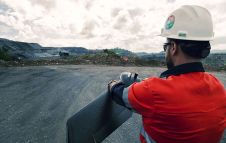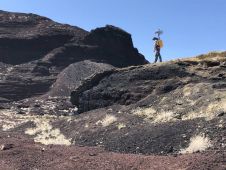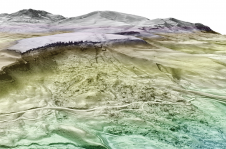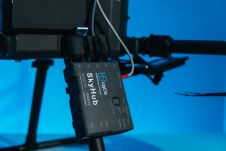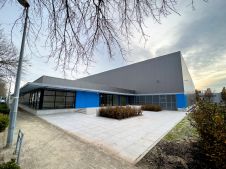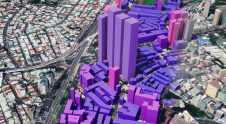Free imagery and good resolution: the new life for SAR amplitude information
Mattia Crespi - University of Rome “La Sapienza” - ISPRS WG VII/2
A continuosly increasing attention to the SAR amplitude information was paid during last years within the Remote Sensing Community, and ISPRS gave a significant contribution with the related research activities mainly managed within the WG VII/2 -DEM Generation and Surface Deformation Monitoring from SAR Data.
As a matter of fact, for a while, satellite SAR imagery amplitude information was basically neglected in favour of phase information, due to the poor ground resolution. On the contrary, since the second part of the last decade, with the growing availability of last generation satellite SAR sensors (COSMO-SkyMed, TerraSAR-X/TanDEM-X, RADARSAT-2, Sentinel-1, ALOS-2) able to supply amplitude information with a much better ground resolution, the scientific and technical interest for amplitude information was remarkably boosted.
Starting from radargrammetry, a well known technique developed around the middle of last century for terrestrial and aiborne SAR applications, investigations were developed about the potential for Digital Surface Models generations from SAR satellite imagery amplitude information. A remarkable benefit of this approach is its full independence from the image coherence, hardly to be satisfied in several situations, but needed by the interferometric approach.
Moreover, considering the high available ground resolution of some imagery types (SpotLight and Staring SpotLight), together with the very high quality satellite orbits, SAR imagery were found capable to achieve 3D positioning accuracies of natural and man-made persistent scatterers at few centimeters accuracy level in a global reference frame (so called Imaging Geodesy approach), therefore raising the interest for possible monitoring applications, independently or integrated with the very well established DInSAR technique, especially when fast and wide displacements are concerned.
Now the interest is enormously increased even more, thanks to the free availability of the ESA Sentinel-1 imagery, opening an unprecedented opportunity to continuously and timely monitoring the Earth surface at a 6 days rate.
除了最近potenti示威al of the DInSAR technique with the twin Sentinel-1 satellites imagery, relevant prospects for the exploitation of Sentinel-1 amplitude information are strictly linked to the climate change monitoring, not only observing the morphological evolution of the cryosphere at polar caps, but also allowing the surface velocity field (linked to ice thickness) estimation at the level of a single glacier all over the world, using tracking techniques applied to SAR imagery.
Significant experiments were developed over different glaciers (Karakoram, Patagonia) and dedicated software are under development, even in Free and Open Source environment.
Therefore, a completely new, free, global and continuous glacier velocities monitoring services could became a reality pretty soon, supporting the already well established glaciers monitoring actions and, more globally, the climate change observation.
It is not certainly a case that NASA, a couple of months ago, awarded the Italian teamICECreamthe Galactic Impact worldwide prize for theirL.I.V.E. Glacier Project, proposing just a very similar idea in the frame of the worldwide NASA Space Apps Challenge.
Make your inbox more interesting.Add some geo.
Keep abreast of news, developments and technological advancement in the geomatics industry.
Sign up for free



